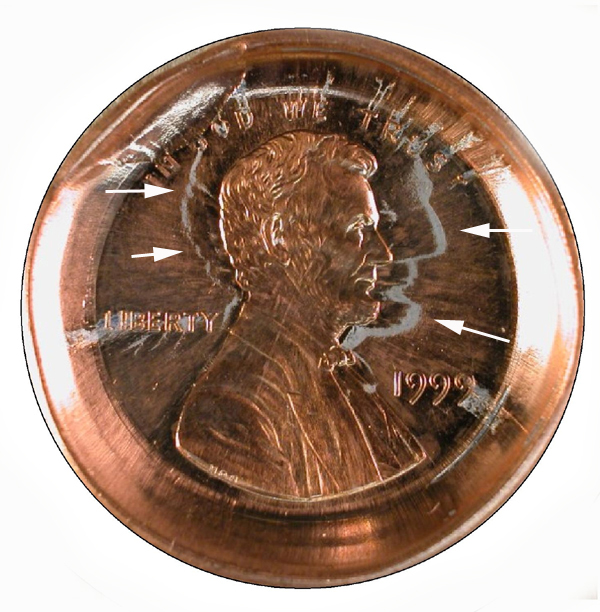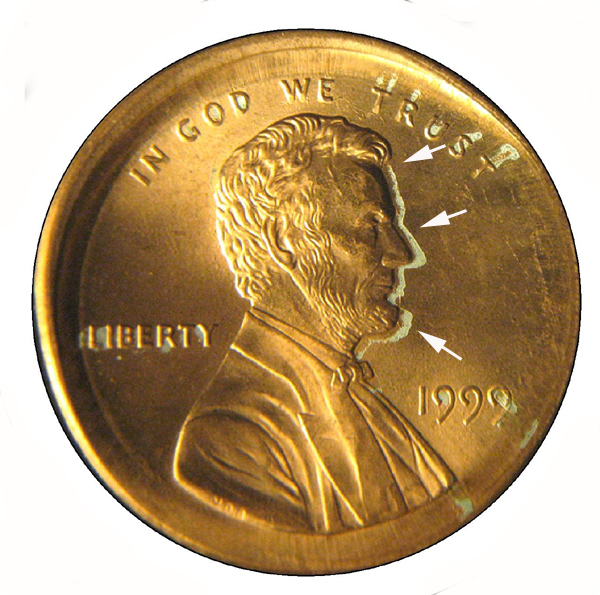PART V. Planchet Errors:
Plating Errors:
Split plating doubling
Definition: Best expressed and most often seen among broadstrikes and off-center strikes, split plating doubling is restricted to copper-plated zinc cents. When the planchet is struck, the portion trapped beneath the dies expands in all directions. The thin copper plating is subjected to tensile as well as compressive stress. The tensile stress causes the copper plating to rupture, exposing the underlying zinc. The exposed zinc often outlines large centrally-located design elements, like busts and buildings. Split plating doubling can, however, involve any design element, including peripheral ones.
Another factor involved in split plating doubling is a tendency for the copper plating to catch on the sharp corners of the recesses in the die face. This can tear open the copper plating as the coin expands.
Split plating doubling has also been referred to as “split-line doubling”, but this term has been largely abandoned.

A dramatic case of split plating doubling is seen above in a 1999 cent that takes the form of an enormously expanded, strongly cupped broadstrike. A small indent can be seen at 10:00. The exposed zinc surrounds Lincoln’s bust. Other areas of exposed zinc are associated with LIBERTY and IN GOD WE TRUST.

This broadstruck 1999(P) Lincoln cent developed split plating doubling in front of Lincoln’s profile. The split plating is indicated by white arrows.